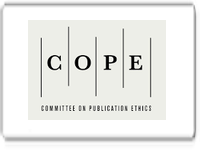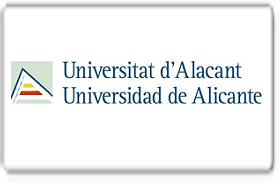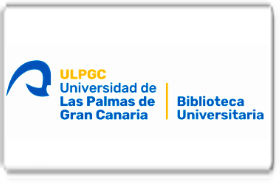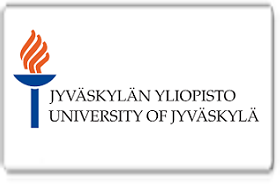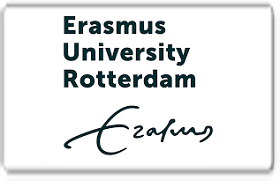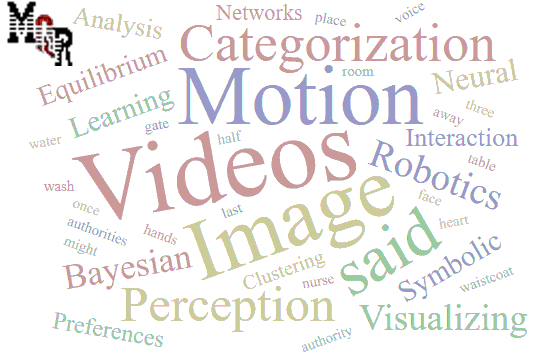La aprehensión comunicativa en las aulas de inglés como lengua extranjera: Una revisión bibliográfica.
DOI:
https://doi.org/10.56048/MQR20225.7.1.2023.2735-2757Palabras clave:
Ansiedad del habla en EFL, aprehensión comunicativa, enfoque humanista para la ansiedad del habla, humanismo en la educación, estrategias para la ansiedad del habla en EFL.Resumen
Algunos investigadores y profesores consideran que la teoría humanista del aprendizaje de idiomas, en la que el desarrollo emocional de los alumnos es uno de los objetivos principales, puede convertirse en una posible ayuda para alumnos que tienen ansiedad para hablar el inglés como lengua extranjera. Es así como el presente estudio hace uso del método cualitativo integrativo para identificar los estudios que, a juicio de la investigadora, son los más relevantes en este campo. Los resultados están agrupados en cinco grupos de información, a saber, los orígenes y el desarrollo de los estudios sobre ansiedad para hablar, el enfoque humanista particularmente de Gomes de Matos, las fuentes de la ansiedad para hablar, las estrategias más reconocidas para enfrentar a la ansiedad, así como, la gamificación como la estrategia más relevante para trabajar los problemas de ansiedad en los estudiantes. Se concluye que la teoría humanista tiene aplicaciones adecuadas para apoyar al docente cuando se encuentra con estudiantes que presentan ansiedad del habla.
Descargas
Métricas
Cited
DOI: 10.56048![]()
Citas
Abdullah, K. I., & Abdul Rahman, N. I. (2010). A study on second language speaking anxiety among UTM students. Unpub, 1-6. Retrieved from: http://eprints.utm.my/id/eprint/10275/
Aida, Y. (1994). Examination of Horwitz, Horwitz, and Cope's construct of foreign language anxiety: The case of students of Japanese. The Modern Language Journal, 78(2), 155–168. Retrieved from: https://doi.org/10.1111/j.1540-4781.1994.tb02026.x
Akbar, F. (2014). The role of reading in improving speaking skills in teaching English as a foreign language. International Journal of English Language & Translation Studies, 2(4), 92–98. DOI:10.5281/zenodo.15946
Akter, F., & Al Mamun, Md, (2019). Study of humanistic education: A solution to language teaching in Bangladesh. Retrieved from: https://doi.org/10.5281/zenodo.3545047
Arifi, Q. (2017). Humanistic approach in teaching a foreign language (from a teacher's perspective). European Scientific Journal, 13(35). DOI: https://doi.org/10.19030/tlc.v7i11.249
Aydın, S. (2018). Technology and foreign language anxiety: Implications for practice and future research. Journal of Language and
Linguistic Studies, 14(2), 193-211. DOI: 10.19030/TLC.v7i11.249
Backman, N. (1976). Two measures of affective factors as they relate to progress in adult second language learning. Working Papers in Bilingualism, 10, 100–22. Retrieved from: https://files.eric.ed.gov/fulltext/ED126728.pdf
Bailey, K. M. (1983). “Dairy (sic.) studies of classroom language learning: The doubting game and the believing game,” in E. Sadtano (Ed.), Language acquisition and the second/foreign language classroom, Singapore: SEAMEO Regional Language Centre, 1991, 60–102.
Bailey, P., Onwuegbuzie, A.J., & Daley, C.E. (2003). Foreign language anxiety and student attrition. Academic Exchange Quarterly, 7, 304–308. DOI: https://doi.org/10.1017/S0142716499002039
Bowen, A.D. (2004). Overcoming the fear of speaking in a foreign language: A study of the role that selected humanistic techniques play in reducing language anxiety associated with oral performance in the TESOL classroom. [Abstract] Submitted in part fulfilment of the requirements for the Master of Arts with Specialization in TESOL at University of South Africa.
Brown, H. (2007). Teaching by principles: An interactive approach to language pedagogy (3rd ed.). Pearson Education.
Brown. H. D. (2000). Principles of Language Learning and Teaching (4th ed.). San Francisco State University. Longman, Inc.
Carmona-Chica, L., & Argudo-Garzón, A. (2022). Vocabulary skills and virtual tools in students of A2. Universidad Católica de Cuenca. Revista Arbitrada Interdisciplinaria Koinonía. 7(23). Retrieved from: http://dx.doi.org/10.35381/r.k.v7i1.1677
Chang, A. C.-S. (2008). Sources of listening anxiety in learning English as a foreign language. Perceptual and Motor Skills, 106(1), 21–34. DOI: 10.2466/pms.106.1.21-34
Cheng, YS. (2002). Factors associated with foreign language writing anxiety. Foreign
Language Annals, 35, 647-656. DOI:10.1111/j.1944-9720.2002.tb01903.x
Cheng, YS. (2004). A measure of second language writing anxiety: Scale development and preliminary validation. Journal of Second Language Writing, 13, 313–335. DOI:10.1016/j.jslw.2004.07.001
Cheng, YS. (2004). EFL students' writing anxiety: Sources and implications. English Teaching & Learning, 29. 41–62. This paper was written based on a paper orally presented at the TESOL 2004 Convention at Long Beach, California, U.S.A. Retrieved from: https://www.researchgate.net/publication/306392321_EFL_Students%27_Writing_Anxiety_Sources_and_Implications
Dornyei, Z. (2001). Motivational Strategies in the Language Classroom. Cambridge: Cambridge University Press. Retrieved from: https://doi.org/10.1017/CBO9780511667343
Dörnyei, Z. (2005). The psychology of the language learner: Individual differences in second language acquisition. Lawrence Erlbaum. DOI: 10.1017/CBO9780511667343
Dwyer, K. K., & Davidson, N. M. (2012). Is public speaking really more feared than death? Communication Research Reports, 29(2), 99–107. Retrieved from: https://doi.org/10.1080/08824096.2012.667772
Fajardo-Guapisaca, M.M., & Argudo-Garzón, A.L. (2022). Oral skills and Flipgrid platform in English as a foreign language learners. Revista Arbitrada Interdisciplinaria Koinonía. DOI:10.35381/r.k.v7i1.1678
Gage, N. L., & Berliner, D. C. (1991). Educational Psychology.
Gardner, R. C., & Maclntyre, P. D. (1993). On the measurement of affective variables in second language learning. Language Learning, 43(2),157–194. Retrieved from: https://doi.org/10.1111/j.1467-1770.1992.tb00714.x
Gardner R.C., & Maclntyre, P. D. (1993). A student’s contributions to second-language learning. Part II: Affective variables. Language Teaching, 26, 1–11. DOI:10.1017/S026144480000700X
Gardner, R.C., & MacIntyre, P.D. (1992). A student’s contributions to second-language learning. Part I: Cognitive variables. Language Teaching, 25, 211–220. DOI:
1017/S026144480000700X
Gardner, R. C., Tremblay, P. F., & Masgoret, A. M. (1997). Towards a full model of second language learning: An empirical investigation. The Modern Language Journal, 81, 344–362. DOI: 10.1111/j.1540-4781.1997.tb05495.x
Ghanizadeh, A., Amiri, A., & Jahedizadeh, S. (2020). Towards humanizing language teaching: Error treatment and EFL learners’ cognitive, behavioral, emotional engagement, motivation, and language achievement. Iranian Journal of Language Teaching Research, 8(1), 129–149. DOI:10.30466/IJLTR.2020.120811
Gomes de Matos, F. (2005). The EFL teacher as a humaniser. IETEFL ISSUES, December 2004-January, 2005.
Gregerson, T. (2003). To err is human: A reminder to teachers of language-anxious students. Foreign Language Annals, 36(1), 25-32. Retrieved from: https://doi.org/10.1111/j.1944-9720.2003.tb01929.x
Horwitz, E. K. (2001). Language anxiety and achievement. Annual Review of Applied Linguistics, 21, 112-126. doi:10.1017/S0267190501000071
Horwitz, E. K., Horwitz, M., & Cope, J. (1986). Foreign language classroom anxiety. Modern Language Journal, 70, 125132. Retrieved from: https://doi.org/10.1111/j.1540-4781.1986.tb05256.x
Horwitz, E.K. (1986). Preliminary evidence for the reliability and validity of a foreign language anxiety scale. TESOL Quarterly, 20, 559–562. https://doi.org/10.2307/3586302
Huitt, W. (2009). Humanism and open education. Educational Psychology Interactive. Valdosta, GA: Valdosta State University. Retrieved from: http://www.edpsycinteractive.org/topics/affect/humed.html
Karakas, A. (2012). How to cope with speaking anxiety in EFL classrooms. ELT Weekly, 4(28). Retrieved from: https://www.researchgate.net/publication/272493623_How_to_Cope_With_Speaking_Anxiety_in_EFL_Classrooms
Kleinmann, H. (1977). Avoidance behaviour in adult second language acquisition. Language Learning, 27(1), 93-107. DOI: 10.1111/j.1467-1770.1977.tb00294.x
Kukulska-Hulme, A., & Shield, L. (2008). An overview of mobile assisted language learning: From content delivery to supported collaboration and interaction. ReCALL, 20, 271-289. DOI:10.1017/S0958344008000335
Kuru-Gonen, I. (2009). The sources of foreign language reading anxiety of students in a Turkish EFL context. Reading, 11(12), 13.
Kuru Gonen, S. I. (2007). L2 reading anxiety: Exploring the phenomenon.
In K. Bradford-Watts (Ed.), JALT 2006 Conference Proceedings. Tokyo: JALT. Retrieved from: https://jalt-publications.org/archive/proceedings/2006/E082.pdf
Liu, M. H., & Huang, W. H. (2011). An exploration of foreign language anxiety and English learning motivation. Education Research International, Article ID: 493167. DOI: 10.1155/2011/493167
Mak, B. (2011). An exploration of speaking-in-class anxiety with Chinese E.S.L. learners. System, 39, 202–214. https://doi.org/10.1016/j.system.2011.04.002
Mardijono, J. J. (2001). Humanistic strategies in the EFL speaking class. Presented in the Fifth Annual International Symposium on Applied Linguistics and Language Teaching, Beijing-Guilin, October 7-14, 2001. DOI:10.9744/kata.3.2.92-108
Marin-Pacurucu, B. A., & Argudo-Garzón, A. L. (2022). Gamification strategies and speaking fluency in EFL elementary students. Iustitia Socialis. Revista Arbitrada de Ciencias Jurídicas, 7(1). DOI: 10.35381/racji.v7i1.1702
Maslow, A. H. (1943). A theory of human motivation. Psychological Review, 50(4), 370–396. DOI: 10.1037/h0054346
McCroskey, J. C. (1997). Willingness to communicate, communication apprehension, and self-perceived communication competence: Conceptualizations and perspectives. In Daly, J. A., McCroskey, J. C., Ayres, J., Hopf, T., & Sonadre, D. M. (Eds.), Avoiding Communication: Shyness, Reticence, and Communication Apprehension (2nd ed.). Hampton. Retrieved from: http://www.jamescmccroskey.com/publications/bookchapters/020_1997_C3.pdf
Moskowitz, G. A. (1978). Caring and sharing in the foreign language class. Newberry House. Retrieved from: https://www.amazon.com/Caring-Sharing-Foreign-Language-Class/dp/0838427715
Nath, A., Kumar, R., & Kumar Behura, A. (2017). Humanistic approach to education: A look into the humane teaching and learning perspective. This paper was presented in National Conference at Government Women's Polytechnic, Ranchi.
Olivares-Cuhat, G. (2010). Learning strategies and achievement in the Spanish writing classroom: A case study. Foreign Language Annals, 35, 561-570. DOI: 10.1111/j.1944-9720.2002.tb02724.x
Osboe, S., Fujimura, T., & Hirschel, R. (2007). Student confidence and anxiety in L2 speaking activities. Proceedings of the Independent Learning Association 2007 Japan Conference: Exploring theory, enhancing practice: Autonomy across the disciplines. Kanda University of International Studies, Chiba, Japan, October 2007. Corpus ID: 148174997
Oxford, R. (1999). Anxiety and the language learner: New insights. In J. Arnold (Ed.), Affect in Language Learning (pp. 58-67). Cambridge University Press.
Ramírez Ortiz, S., & Artunduaga Cuéllar, M. (2018). Authentic tasks to foster oral production among English as foreign language learners. HOW, 25(1), 51-68. DOI: 10.19183/how.25.1.362
Reinhardt, J., & Sykes, J. (2014). Special issue commentary: Digital game and play activity in L2 teaching and learning. Language Learning & Technology, 18, 2–8. Retrieved from: http://llt.msu.edu/issues/june2014/commentary.pdf
Riasati, M. (2011). Language learning anxiety from EFL learners' perspective. Middle-east Journal of Scientific Research, 7, 907-914.
Rogers, C. (1959). A theory of therapy, personality, and interpersonal relationships as developed in the client-centered framework. In Koch, S. (ed.). Psychology: A study of a science. Vol. 3: Formulations of the person and the social context. McGraw Hill.
Shariati, M., & Bordbar, A. (2009). Interrelationship among foreign language reading anxiety, reading proficiency and text feature awareness in the university context. Iranian Journal of Applied Language Studies, 1(2), 179-206. DOI:10.22111/IJALS.2011.57
Snyder, H. (2019). Literature review as a research methodology: An overview and guidelines. Journal of Business Research, 104, 333-339. DOI: 10.1016/j.jbusres.2019.07.039
Subasi, S. (2010). What are the main sources of Turkish EFL students’ anxiety in oral practice? Turkish Online Journal of Qualitative Inquiry, 1(2). Retrieved from: chrome-extension://efaidnbmnnnibpcajpcglclefindmkaj/https://files.eric.ed.gov/fulltext/ED537842.pdf
Subekti, A. S. (2018). Investigating the relationship between foreign language anxiety and oral performance of non-English major students in Indonesia. Dinamika Ilmu, 18 (1).
Tarighat, S., & Khodabakhsh, S. (2016). Mobile-assisted language assessment: Assessing speaking. Computers in Human Behavior, 64, 409–413. DOI:10.1016/j.chb.2016.07.014
Tsiplakides, I., & Keramida, A. (2009). Helping students overcome foreign languages speaking anxiety in the English classroom: Theoretical issues and practical recommendations. International Education Studies, 2(4). DOI:10.5539/IES.V2N4P39
Young, D. J. (1991). An investigation of students’ perspectives on anxiety and speaking. Foreign Language Annals, 23(6), 539-553. DOI: 10.1111/j.1944-9720.1990.tb00424.x
Young, D. J. (1986). The relationship between anxiety and foreign language oral proficiency ratings. Foreign Language Annals, 19, 439-445. DOI: 10.1111/j.1944-9720.1986.tb01032.x
Zhang, Y. (2009). Reading to speak: Integrating oral communication skills. EnglishTeaching Forum, 1, 32–34. Retrieved from: chrome-extension://efaidnbmnnnibpcajpcglclefindmkaj/https://files.eric.ed.gov/fulltext/EJ923446.pdf
Publicado
Cómo citar
Número
Sección
Licencia
Derechos de autor 2023 MQRInvestigar

Esta obra está bajo una licencia internacional Creative Commons Atribución 4.0.
Los autores se comprometen a respetar la información académica de otros autores, y a ceder los derechos de autor a la Revista MQRInvestigar, para que el artículo pueda ser editado, publicado y distribuido. El contenido de los artículos científicos y de las publicaciones que aparecen en la revista es responsabilidad exclusiva de sus autores. La distribución de los artículos publicados se realiza bajo una licencia 


















